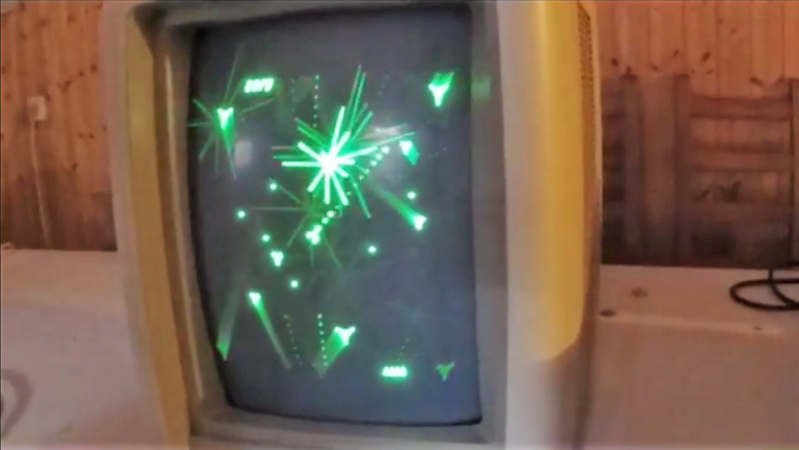We’ve all had the heartbreak of ordering something online, only to have it arrive in less than mint condition. Such are the risks of plying the global marketplace, only more so for used gear, which seems to be a special target for the wrath of sadistic custom agents and package handlers all along the supply chain.
This cruel fate befell a vintage Vectrex game console ordered by [Senile Data Systems]; the case was cracked and the CRT was an imploded mass of shards. Disappointing, to say the least, but not fatal, as he was able to make a working console from the remains of the Vectrex and an old IBM monitor. The Google translation is a little rough, but from what we can gather, the Vectrex, a vector-graphics console from the early 80s with such hits as MineStorm, Star Castle, and Clean Sweep, was in decent shape apart from the CRT. So with an old IBM 5151 green phosphor monitor, complete with a burned-in menu bar, was recruited to stand in for the damaged components. The Vectrex guts, including the long-gone CRT’s deflection yoke assembly, were transplanted to the new case. A little room was made for the original game cartridges, a new controller was fashioned from a Nintendo candy tin, and pretty soon those classic games were streaking and smearing across the long-persistence phosphors. We have to admit the video below looks pretty trippy.
If arcade restorations are your thing, display replacements like this are probably part of the fun. Here’s a post about replacing an arcade display with a trash bin CRT TV, an important skill to have is this business.















Wow. That high-persistence phosphor makes it look amazing
I once got a Watchman with the hopes of making a portable Vectrex that would use the pocket, flat, rear-phosphor CRT. I really wish I had had the skills required (and the vectrex).
The Watchman would have taken some special skills, indeed. I used one for a “laptop” Z-180 computer in the early 1990s, and it was only possible at all because I was using a raster scan bitmapped display, but even then it had to be precise NTSC timing, with 525 lines and interlace; 524 or 526 wouldn’t work because it would drift out of sync, then snap into place. I had to redesign my whole graphics counter chain to accommodate that. But at least I didn’t have to deal with the special geometry of the Watchman CRT: because the phosphor screen is at a very steep angle to the electron beam, and is curved at that, both the H sweep amplitude and focus have to vary in non-linear ways as V position changes. It would have been a real challenge to get straight lines to look straight on that, drawing vectors point-to-point. I also discovered that Sony used a lot of overscan on Watchman, because it was more sensitive than the average CRT to magnetic fields, so if you were facing East and then turned toward the west with it, the picture might move 3/8 inch on the screen. Which is quite a bit on a 4″ screen. It was truly a just-barely-works technology.
I wonder if the Sinclair TV80 is any easier…
For a class project I hacked an amber MDA display into an X/Y scope as a little toy for my stereo system. Mostly because everyone else was building audio amplifiers for their project and I wanted to fit in with the theme.
I used brute force, I made a small amplifier to crank the gain up for the vertical control so it would react better when driven at the higher frequency of audio (aimed for about 1000-3000 Hz) instead of 60 Hz. Not elegant, but could be completed at my low skill level in the 2 days the others were given to assemble their amplifier kits.
Interesting choice of video embedded in the linked article.
Just found out a day ago that some browsers embed the wrong video – my bad. Fixed it by now
I really liked the one that was there before the fix though.
Needs a kybd w the pf keys to go full retro. (and some guy editing jcl)